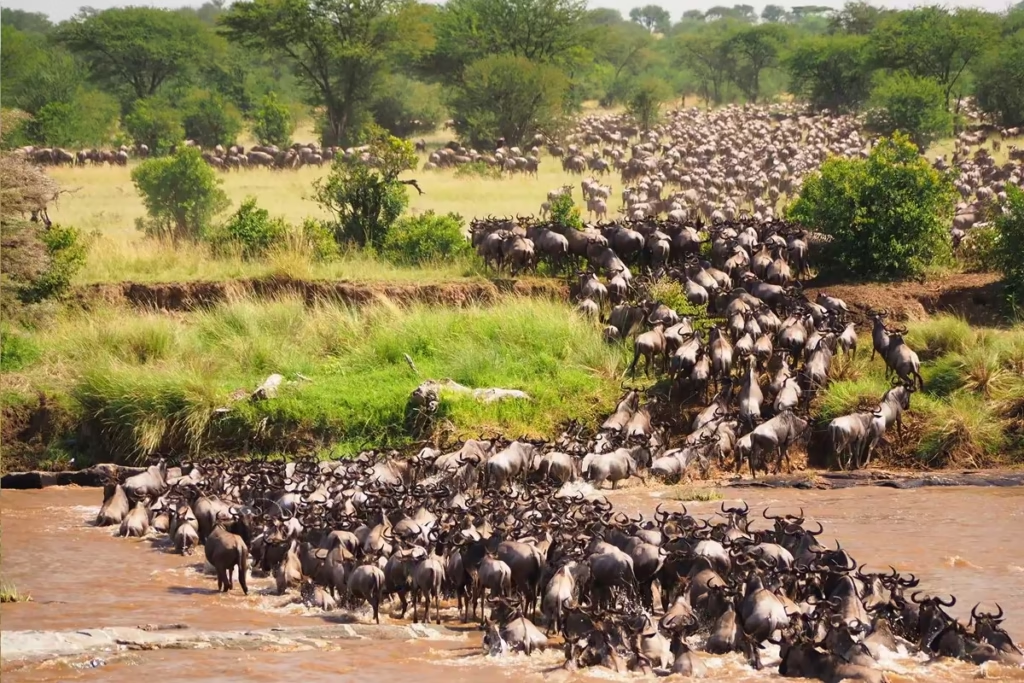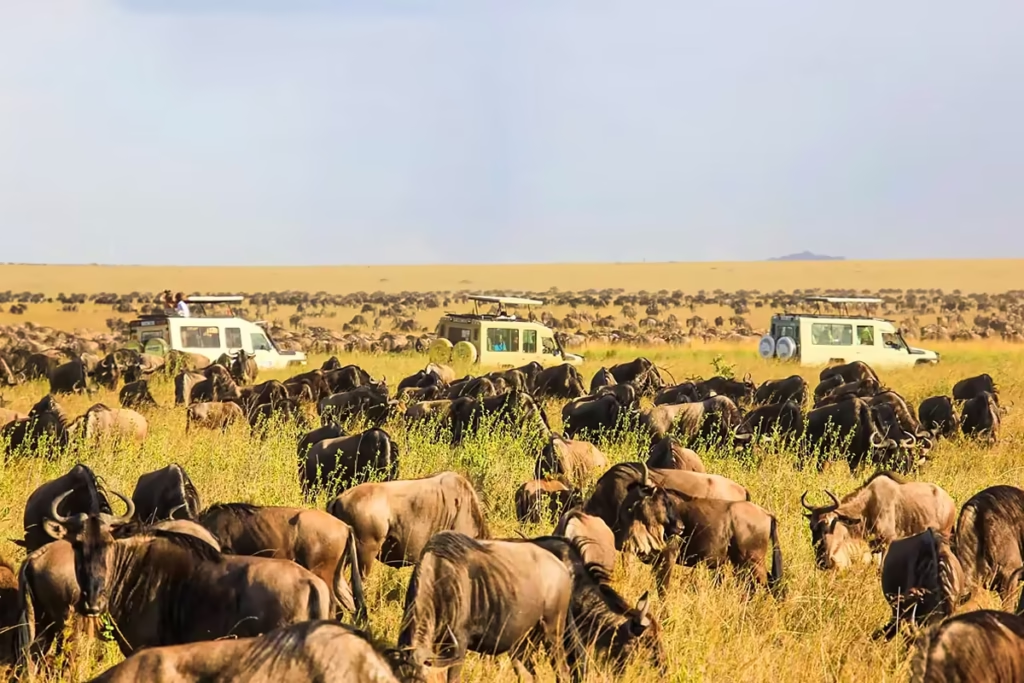How to Prepare Your Best Trip to Tanzania in 2025 – A Complete Guide
Planning a trip to Tanzania is like setting the stage for an adventure of a lifetime. From thrilling safaris in the Serengeti to relaxing on Zanzibar’s white-sand beaches, this East African gem has it all. In 2025, Tanzania continues to rank high as a must-visit destination for travelers seeking stunning landscapes, rich culture, and incredible wildlife. Whether you’re a first-time visitor or a seasoned explorer, this guide has you covered with tips, tricks, and insights to help you prepare for your best trip ever.
Why Tanzania in 2025?
Tanzania offers an unforgettable travel experience, blending natural wonders, vibrant culture, and incredible biodiversity. Here’s why 2025 is the perfect year to visit:
- Peak Safari Season: Wildlife migrations in the Serengeti are at their best from June to October.
- Improved Travel Infrastructure: Upgrades to airports, roads, and accommodations have made exploring Tanzania even more convenient.
- Sustainable Tourism Efforts: Tanzania continues to prioritize eco-tourism, so you can travel responsibly while supporting local communities.
Essential Pre-Trip Planning
Before you book your flight, here are some crucial steps to prepare for your Tanzanian adventure:
1. Check Your Travel Documents
- Passport: Ensure your passport is valid for at least six months beyond your travel dates.
- Visa: Most travelers need a visa to enter Tanzania. You can apply online for an e-visa or get one on arrival at major airports like Kilimanjaro International or Julius Nyerere International in Dar es Salaam.
- Travel Insurance: Don’t skip this! Choose a comprehensive travel insurance plan that covers medical emergencies, trip cancellations, and adventure activities like hiking or safaris.
2. Vaccinations and Health Precautions
- Yellow Fever Vaccine: Required if you’re traveling from a yellow fever-endemic country.
- Malaria Prevention: Tanzania is a malaria-risk area, so pack anti-malarial medication and insect repellents.
- Routine Vaccines: Make sure your routine vaccines (like Hepatitis A and Typhoid) are up-to-date.
Pro tip: Carry a basic first aid kit with essentials like band-aids, antiseptic wipes, and pain relievers.
3. Set a Budget
Tanzania can cater to all types of travelers, from luxury seekers to budget backpackers. Here’s a rough breakdown:
- Budget Travelers: $50–$100 per day
- Mid-Range Travelers: $150–$300 per day
- Luxury Travelers: $400+ per day
This includes accommodations, meals, transportation, and activities. Keep in mind that safaris and tours can significantly impact your budget.
Must-Visit Destinations in Tanzania
Tanzania is packed with incredible places to explore. Here are the top destinations you shouldn’t miss:
1. The Serengeti National Park
- Why Visit: Home to the Great Migration, the Serengeti is the ultimate safari destination. Spot the Big Five (lion, elephant, rhino, leopard, and buffalo) as you traverse the golden plains.
- Best Time to Visit: June to October for the migration, or January to February for calving season.
- Pro Tip: Book a hot air balloon safari for a bird’s-eye view of the park!
2. Mount Kilimanjaro
- Why Visit: At 5,895 meters, Kilimanjaro is Africa’s tallest mountain and a bucket-list hike for adventurers.
- Best Time to Climb: January to March and June to October offer the best weather conditions.
- Pro Tip: Training is essential! Start preparing 3–6 months before your trip to handle the altitude and steep climbs.
3. Zanzibar Archipelago
- Why Visit: Crystal-clear waters, powdery beaches, and a rich cultural history make Zanzibar a tropical paradise.
- Don’t Miss: Explore Stone Town (a UNESCO World Heritage site) and snorkel or dive in the turquoise waters around Mnemba Atoll.
- Best Time to Visit: June to October for dry weather, or December to February for a warm escape.
4. Ngorongoro Crater
- Why Visit: This massive volcanic caldera is a haven for wildlife. You’ll see lions, elephants, and even endangered black rhinos.
- Pro Tip: Visit early in the morning to avoid crowds and see animals at their most active.
5. Lake Manyara National Park
- Why Visit: Famous for its tree-climbing lions and flamingo-filled waters, this park is perfect for a quick day trip.
Packing Tips for Tanzania
Packing for Tanzania requires a mix of comfort, practicality, and preparation for varied climates. Here’s a handy list:
Clothing:
- Lightweight, breathable clothes in neutral colors for safaris.
- Warm layers for early morning game drives or Kilimanjaro treks.
- Swimwear for Zanzibar’s beaches.
- Comfortable hiking boots and sandals.
Essentials:
- A high-SPF sunscreen and wide-brimmed hat.
- Binoculars for wildlife spotting.
- Reusable water bottle (stay hydrated!).
- Power bank for charging devices on the go.
Don’t Forget:
- A good camera or smartphone to capture Tanzania’s beauty.
- A guidebook or offline map app for navigation.
- Plug adapter (Tanzania uses type G sockets).
Cultural Tips and Etiquette
Tanzania’s culture is warm, welcoming, and rich in tradition. Keep these tips in mind to make the most of your trip:
- Greetings Matter: Greet locals with a polite “Jambo” (hello) or “Asante” (thank you in Swahili).
- Respect Dress Codes: In rural areas, dress modestly to respect local customs.
- Photography Etiquette: Always ask permission before taking someone’s photo.
- Tipping: Tipping is customary in Tanzania. Safari guides, porters, and hotel staff typically expect tips as a sign of appreciation.
Top Activities to Try in Tanzania
Looking for some adventure? Add these activities to your itinerary:
- Go on a walking safari in Selous Game Reserve.
- Explore Maasai culture through guided village tours.
- Snorkel or dive with dolphins in Pemba Island.
- Witness the Great Migration in Serengeti.
How to Travel Around Tanzania
Getting around Tanzania is easier than ever with several options:
- Domestic Flights: Perfect for covering long distances quickly, especially between Arusha, Zanzibar, and Dar es Salaam.
- Safari Tours: Many tour operators offer guided safaris, which include transportation.
- Public Buses: Affordable, but can be slow and less comfortable.
- Car Rentals: Best for flexibility, but you’ll need a 4×4 for national parks.







